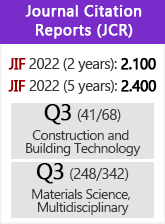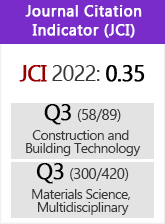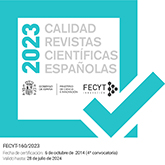Macroscopical morphology of deterioration of the stone used in the cathedral whole of Granada/Spain
DOI:
https://doi.org/10.3989/mc.1992.v42.i226.710Abstract
The main factors of deterioration that affect the Cathedral Whole of Granada are one of natural thermic origin due to the low temperatures during the winters and the higher thermic oscillations and those of anthropogenical origin: fundamentally the oxidation of metallic elements and atmospheric pollution due to burnt products. For this reason, the more important deterioration mechanisms are the freezing ones due to the expansion produced in the water retained inside the pores and microcracks, fundamentally in the architectonic elements with high expositional surface and in their shady orientation; the main indicators produced are fissuring and spalling. In this way, a lot of elements of Santa Pudia stone located in the Royal Chapel crenellations have disappeared and the rest are very deteriorated. The more compact Sierra Elvira stone used on the upper zone of the cornices has also been affected by the freezing mechanism, which starts with the microcracks produced by differential dilatations due to the thermic oscillations which made the water access easy. The iron corrosion and later expansion of the oxidation products has provoked the cracking and fissuring of many ornamental elements like balls, pinnacles, etc, and this situation has obliged their dismantling on the upper zones due to the danger to the public. The mechanisms of dissolution, crystallization cycles and Chemical action have led to abundant material loosening in the form of grain disgregations overcoats on the higher humidity zones, and formation of hollows (pitting, alveolar erosion, striations) in the zones more exposed to the winds. This situation is generalized in the lower zones of the monument, except on the main facade, and in the parapets and lower zones of the cornices. The grain disgregations are more important when biological crusts or unburned deposits exist, the latter being of major abundance on the surfaces near the Gran Vía and in its orientation. It is necessary to mention the pigeon dung deposits, very important in the main facade, with greater stetical repercussion.
Downloads
Download data is not yet available.
Downloads
Published
1992-06-30
How to Cite
Alcalde, M., Martin, L., Bello, M. A., & Martin, A. (1992). Macroscopical morphology of deterioration of the stone used in the cathedral whole of Granada/Spain. Materiales De Construcción, 42(226), 27–48. https://doi.org/10.3989/mc.1992.v42.i226.710
Issue
Section
Research Articles
License
Copyright (c) 1992 Consejo Superior de Investigaciones Científicas (CSIC)

This work is licensed under a Creative Commons Attribution 4.0 International License.
© CSIC. Manuscripts published in both the printed and online versions of this Journal are the property of Consejo Superior de Investigaciones Científicas, and quoting this source is a requirement for any partial or full reproduction.All contents of this electronic edition, except where otherwise noted, are distributed under a “Creative Commons Attribution 4.0 International” (CC BY 4.0) License. You may read here the basic information and the legal text of the license. The indication of the CC BY 4.0 License must be expressly stated in this way when necessary.
Self-archiving in repositories, personal webpages or similar, of any version other than the published by the Editor, is not allowed.

















